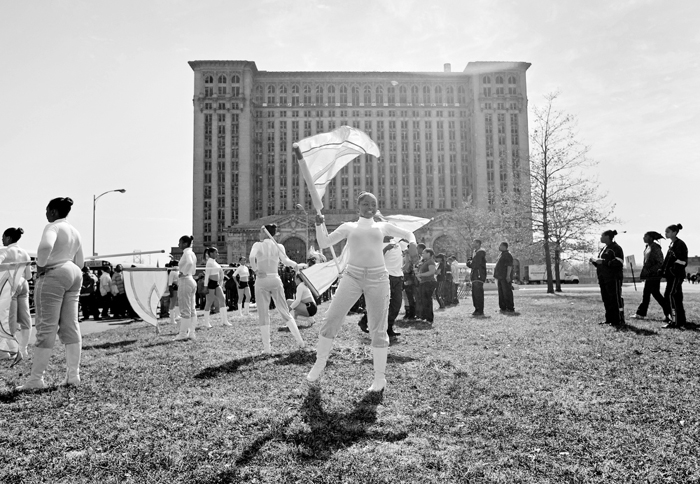By **John Patrick Leary**
Photo courtesy of Can’t Forget the Motor City
 Since the U.S. census data came out, national news stories coming out of Detroit have been once again ones of absence: Detroit’s population declined by a staggering 25 percent over the last 10 years, the largest drop since St. Louis shrunk by 27 percent in the 1970s. Whether you believe the numbers completely—the mayor is demanding a recount—the census figures do, at some basic level, confirm what everybody already knows. Detroit’s census figures have also been big national news, reviving once again the popular idea of a vacant Detroit.
Since the U.S. census data came out, national news stories coming out of Detroit have been once again ones of absence: Detroit’s population declined by a staggering 25 percent over the last 10 years, the largest drop since St. Louis shrunk by 27 percent in the 1970s. Whether you believe the numbers completely—the mayor is demanding a recount—the census figures do, at some basic level, confirm what everybody already knows. Detroit’s census figures have also been big national news, reviving once again the popular idea of a vacant Detroit.
Most ruin photography plays on this fantasy of a vacant city. Much of the frustration with ruin photography I hear in Detroit focuses on all the attention paid to empty spaces, without much interest in the people who live in and around them—or, for that matter, those who built them, scrap them, and continue to speculate on them. (Few properties are ever really “abandoned,” of course.) Another problem with so-called “ruin porn” is just how conventional it is. When a porno movie starts with a lonely housewife, a muscular plumber ringing the doorbell, and a funky bassline, you know what you’re in for. Likewise with ruin photography, which, at least if you look at a lot of it, has ceased to surprise or shock. Detroit photographers Romain Blanquart and Brian Widdis respond with their fascinating photo series, Can’t Forget the Motor City.
“The global media and many visiting photographers see Detroit as an abandoned and dead city,” they write. “What is constantly absent from these soulless images are the people.” At least two of their photos seem to respond directly to “ruin porn,” one more obviously than the other. The first photo on the site is, appropriately enough, a picture of Michigan Central Station. Here, though, the station stands in the background of one of Detroit’s proud public high-school marching bands, warming up for the Detroit’s raucous St. Patrick’s Day Parade. And one of their portraits depicts a young man in the sort of seedy alley that might appeal to many documentary photographers for its picturesque danger and dereliction. Yet the main danger here appears to come from the photographer, even if his only offense is interrupting a man who looks like he doesn’t want his picture taken anymore.
Their project unsentimentally depicts a city of grace, fear, and occasional beauty. Some offer idiosyncratic odes to the Detroit’s undeniable weirdness—in one photo, two runaway backyard chickens scurry past a car headlight and a garbage can that bids them adieu with graffiti that reads, cryptically, “BYE SLY.” Another photo takes us into the seedy underbelly of a party store with an ironic juxtaposition that might make Robert Frank blush. Others celebrate the careful pride many Detroiters still take in what made the city famous. Most of their work focuses on portraits of the people of Detroit, so often maligned, so regularly ignored, and so frequently cropped out of the images and stories of the city. Meticulous lists of violence and carefully manicured gardens, teenage lovers and grown-up ones, preachers and line dancers, infants and grandparents, loafers and mechanics: they all remind us of the ordinariness of an extraordinary place, and of the beauty that can be found in unexpected places.
Copyright 2011 John Patrick Leary
________________________________________________________________________
John Patrick Leary teaches American literature at Wayne State University in Detroit and is at work on a book on the place of the “third world” in the American imagination. His article, “Detroitism” appeared in the January 2011 issue of Guernica.
